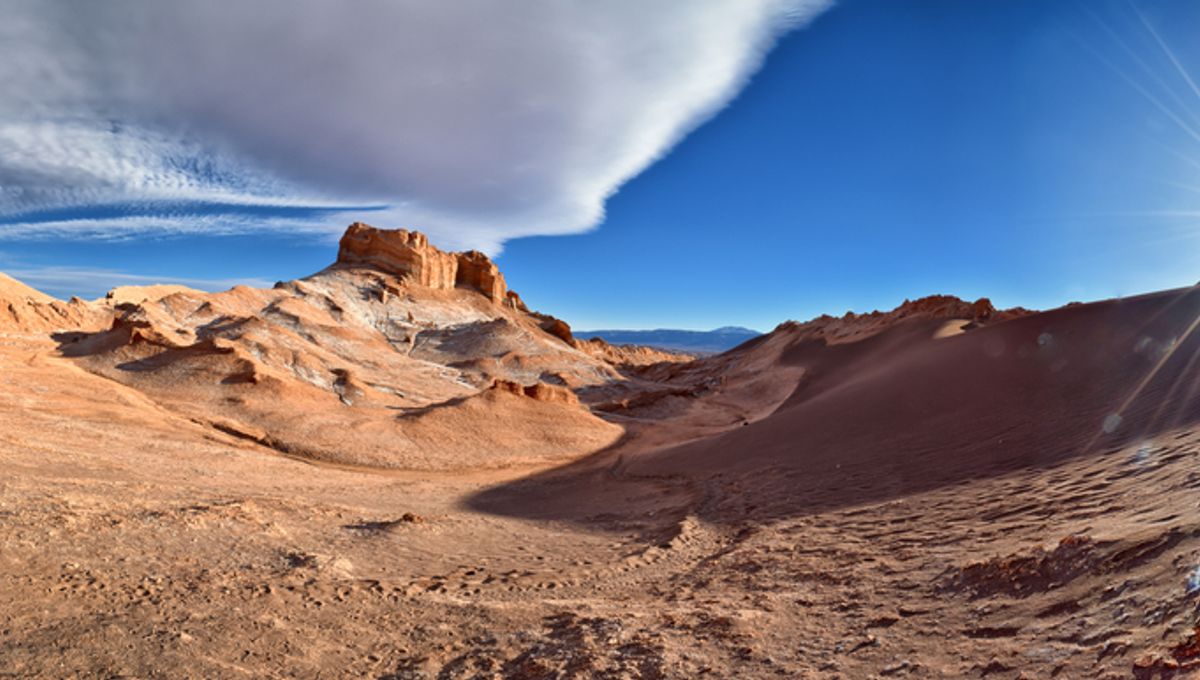
There’s nowhere on Earth quite like the Atacama Desert. Literally: it exists in a basically unique meteorological void, rendering it all but devoid of water and home to almost no life at all.
But “almost no life” is not the same thing as “no life” – and increasingly, science is turning up ever-more bizarre and hidden organisms that have eked out a living in this super-arid environment. Discovering these extremophiles is extremely tricky, though, for one particularly on-brand reason: in a place as dead as the Atacama, separating life from the lifeless is often just too difficult.
At least, that’s been the case so far. A new study may have just helped the process along some, though, with the development of a new technique for separating extracellular genetic material, or eDNA – that is, fragments of biological structures left over from dead organisms – from intracellular genetic material, or iDNA – the alive stuff.
“If you extract all the DNA, you have DNA from living organisms and also DNA that can represent organisms that just died or that died a long time ago,” study lead Dirk Wagner, a geomicrobiologist at the GFZ German Research Centre for Geosciences in Potsdam, said in a statement this week.
And while it is possible to separate out which is which using metagenomic sequencing, doing so requires sufficient good-quality DNA. “[That] is often the bottleneck in low-biomass environments” such as the Atacama, Wagner explained.
So, what’s the solution? Well, it’s obviously a bit more technical than this, but essentially: they washed the samples. Seriously: Atacama soil was put in a tube of cold liquid and shaken a bit; the resulting dirty liquid was emptied out, and then the process was repeated. After four rounds, nearly all of the eDNA was in the liquid, and nearly all of the iDNA was in the leftover soil sample.
“Our findings underscore the significance of utilizing alternative genomic techniques in low-biomass environments where traditional DNA- and RNA-based analyses may not be feasible,” the paper reports. “The results demonstrate the viability of the proposed study framework and show that specialized microorganisms are important in initial soil formation processes, including microbial-driven mineral weathering, as well as the fixation of carbon and nitrogen.”
But while it’s good news for Atacama-heads, this new method of microbial analysis is really a proof-of-concept for investigations well outside of this corner of South America. Not for nothing is the desert sometimes referred to as “Mars on Earth” – thanks to its extreme aridity, its specific soil type, and UV radiation levels higher than anywhere else on the planet, the Atacama has been used by researchers as an analog for the red planet for close to two decades now.
“The subsurface of Mars is often proposed to be a habitat for microbes, and this is what we exactly see in [the Atacama] here on Earth,” Lucas Horstmann, a PhD student at GFZ who was not involved in the new study, told Euronews back in May.
Working alongside Wagner, Horstmann found other similarities that hint towards the potential for life outside of our own planet: “The conditions are not as extreme as on Mars, but it’s the same pattern,” he said. “There are harsh conditions on the surface, no water, and high UV radiation, and then you go deeper and find gypsum also present on Mars.”
So, as David Bowie once queried: is there life on Mars? We don’t yet know – but with a little rinsing and shaking, we may be one step closer to finding out.
The paper is published in the journal Applied and Environmental Microbiology.
Source Link: How To Discover Life On Mars? In The Atacama, A New Method Holds One Key